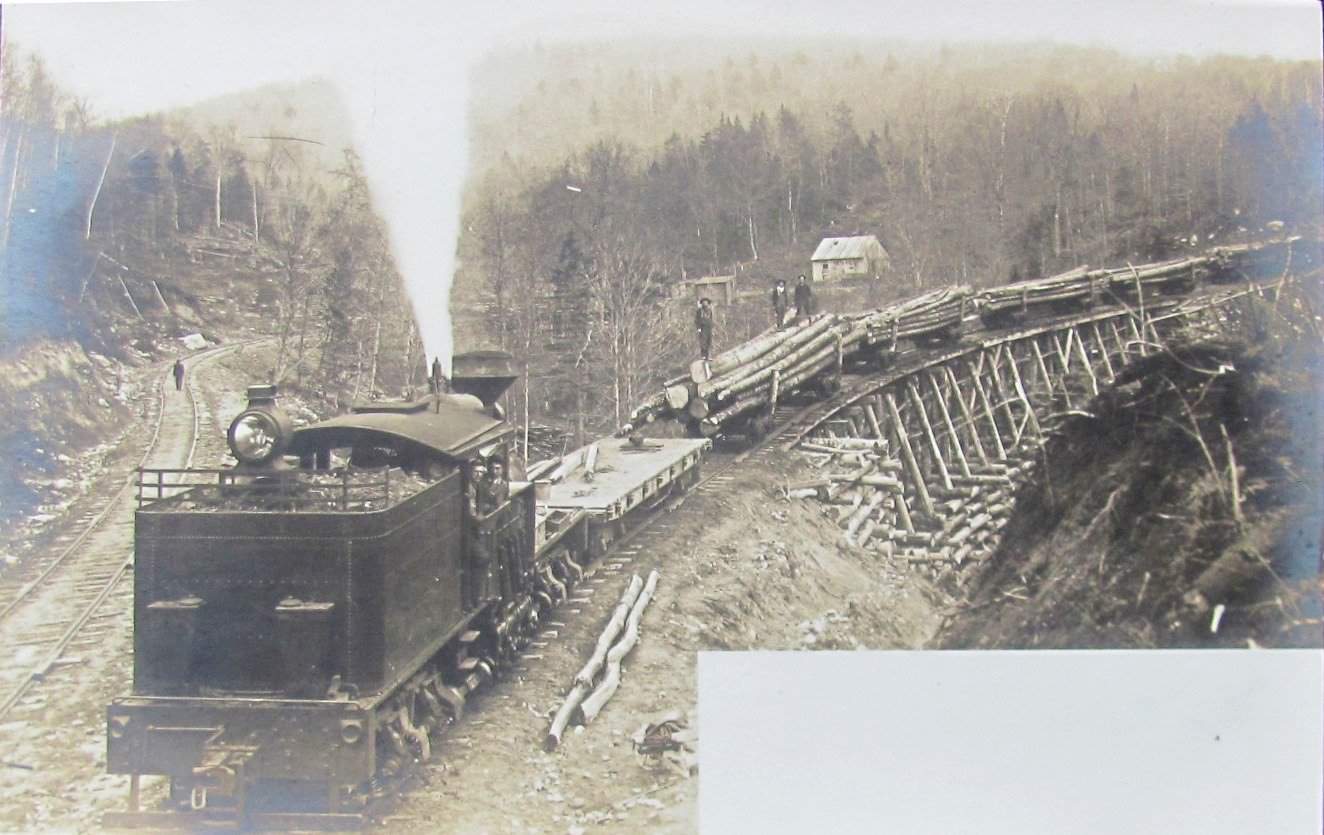Here’s a history I’ll just touch on. I found some history in, “The Coming of the Train,” by Brian A. Donelson, and the Green Mountain Long Trail Club.
It was about 1975, I met an old man who had lived in a logging camp on Stratton Mountain as a boy. He was there in the early 1900s. We’ll get to him.
Lye Brook Railroad

The Deerfield River Company sold their land and timber rights to the Deerfield Lumber Company (DLC) in 1906. The owners of DLC knew they needed a more reliable method of removing timber from the woods.
Floating logs to mills was not the way. When the river froze in winter, mills were shut down. Another problem was much of the timber was hardwood. Birch, maple, and cherry logs do not float as softwood logs do. A railroad was the answer.
The Deerfield River Rail Road (DRRR) was incorporated in 1906. Many of us will be familiar with log drives on the Connecticut River. As I mentioned previously, this wasn’t an option on Stratton.
A narrow gauge railroad was built up Stratton Mountain, complete with switchbacks and wooden trestles over streams and ravines. The photo with this article may or may not be Stratton, but it is an excellent representation of how it was done.
UH&DS
Last winter I picked up two postcards of a logging railroad in the woods. That’s when I remembered the old man and some of what he told me.
About 45 years ago I met the old man. He was a tall and spry man, about 80.
He told me his father was a logger in Canada. His father moved the family to Maine where his father logged the Maine woods. Eventually the family ended up in a logging camp on Stratton Mountain.
I remember the old man telling me what it was like growing up in logging camps. At Stratton camp there were close to 300 men, women, and children, maybe 50 horses, and a store. This was the Lye Brook Camp.
Men worked in the woods all day. Some men chopped, while others worked with horses skidding logs. They logged a 7,500 acre parcel. Engineers built a number of trestles for the railroad into the forest.
This old man’s father wasn’t alone, bringing his family as many did. He told me women hired out to do laundry and such. There was a simple one-room schoolhouse. Teachers were wives of loggers. It was a village in the mountains.
One of the most interesting things I remember is the name of the railroad logging train. In those days, as today, every railroad line carrying freight or passengers had a name. “B&M,” for Boston & Maine, is a name most will recognize. The train that went into Stratton woods was nicknamed, “The UH&DS.” I asked what those letters stood for. He smiled and said, “Up Hill and Damn Steep”.
He also told me when he was a boy at the Lye Brook Camp, how he made a little money. It was mid-May when a particular fern appeared. He would gather these ferns and walk down to Manchester, where he sold the ferns to a florist. This florist would ship ferns to the city, at a profit, for other florists to use in their floral arrangements. If I remember correctly, he was paid by the pound. Think how many ferns it would take to make a pound.
I wish my memory was better. I know he told me other stories. But at least I have recorded this bit of his history. You can find more on the Lye Brook railroad online.
Bob Turco has spent a lifetime in the woods. He knows the Stratton Pond and Lye Brook area well. Bob told me about finding pieces of old machinery and bricks when he was there.
This week’s old saying I heard when I was trying to buy an antique baby buggy from an old man: “Do you know how to drive a baby buggy?” he asked. “Tickle him behind the ear.”